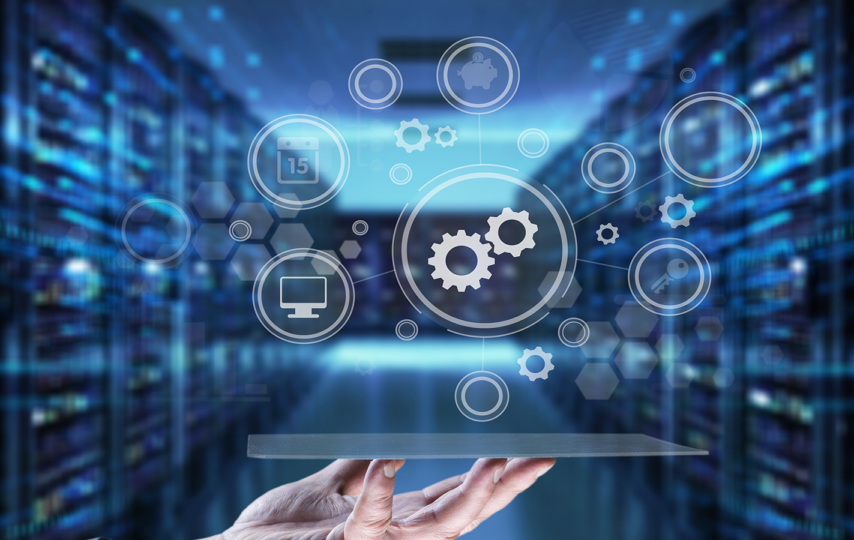The IT industry has always been on a fast track to the latest and greatest. Each time new technology comes out, expect something newer to replace it shortly. In this ever-changing landscape, it’s hard for technology to stay “new.” The mainframe, however, has managed to stay relevant against this backdrop of constant change, even acting as the foundation of the systems of the world’s most successful businesses. Through the years, however, tech professionals have been predicting the end of the mainframe, but the system remains alive and robust until today. Recent research states that 50% of businesses in the US and Europe not only intend to keep their mainframe systems but are planning to expand them. The rising interest in artificial intelligence (AI) and blockchain has driven this reinvigoration of interest in the mainframe, due to the system’s high response times, resilience, and scalability.
Despite proving itself to be a capable player in today’s highly competitive, data-driven world, mainframe applications cannot stay static and must be prepared to respond to the call of the times. The cloud may be the future of computing for most, but it would be a mistake to leave the mainframe behind as “yesterday’s tech.” Mainframe modernization is the key to keeping mainframe systems up to date with the ever-changing needs of growing organizations. A digital transformation is required in today’s highly competitive arena, and the financial services industry or the ever-growing online gaming industry, are no exception. The mainframe has a long history in this industry, with applications going back over 50 years. Mission-critical mainframe applications should be kept up-to-date if they are to meet modern industry demands. The benefits are substantial; modernization will lead to a better customer experience overall and faster time-to-market for financial products and services. It is a challenge for most companies, though, because modernizing core systems can lead to business disruption, which is not an option for banking and financial institutions. To minimize effects to normal business operations, improvements should be done incrementally, with capabilities added one at a time or as needed. A rip-and-replace is unnecessary in mainframe modernization because it does not involve leaving behind legacy systems in favor of a more modern one. They key is building upon what works and integrating the old with the new.
Benefits of Mainframe Modernization in Finance
After years of underinvestment in core banking and financial services systems, the industry has been left behind when it comes to digital innovations. Current solutions simply aren’t optimized to handle the demands of current systems efficiently, not to mention the high expectation of customers used to technological breakthroughs that enable almost instantaneous results. The dwindling manpower capable of managing legacy systems is also a problem because they’re becoming more difficult to find and more expensive to retain. Upskilling IT teams to fill in the gaps is required to maximize the benefits of mainframe modernization. These benefits include:
- Institutional knowledge capture
Banks and financial service providers will benefit from extracting business rules from legacy systems. The institutional knowledge to be gained from such rules will provide the business a competitive edge over newcomers and allow it to determine what modern features need to be integrated into existing systems. - Business value creation
Modernization not only improves the cycle time of business processes but also fast-tracks the deployment of new applications and functionalities that will drive growth, compliance, and performance. These improvements allow for cognitive automation that opens up a multitude of opportunities to provide better service to customers. - Improved efficiency at lower cost
One of the main benefits of modernization is allowing financial services to move from a “customize’ to ”configure“ model of deployment that helps do away with technical debt. This also reduces delivery costs and helps optimize sourcing strategies by capitalizing on scale economies. - Future-proofing and flexibility
Integration with cloud-based systems empowers mainframe systems to allow for more flexibility and easy scalability. Modern languages and platforms help reduce costs in the long run and are easier to maintain than their older counterparts. Modernization also reduces security risks and issues involved in regulatory compliance.
Making Modernization Happen
When considering the modernization of mainframe systems, there are a number of options available to businesses. The business needs of every organization will differ, but there are a few key considerations that will help modernization initiatives succeed.
- Create business value
Don’t just focus on technology upgrades or system migration. Take this opportunity to also improve business processes and capture business rules and institutional knowledge from legacy systems. Both of these can provide a competitive edge to financial service businesses. - Look for quick wins
The success of mainframe modernization is dependent on how quick it delivers—or exceeds—the expected results. It’s hard to get buy-in from stakeholders if results are expected years after modernization, sometimes long after said stakeholders are gone. - Automate migration and avoid disruption
Taking advantage of the latest digital tools and automated application programming interfaces (API’s) will help accelerate your mainframe modernization. With the solutions available today, it’s also easy to choose an approach that will minimize business disruption, if not avoid it completely. - Don’t just leave everything to IT
Mainframe modernization is not an issue for it; it’s a strategic business issue that should involve business leaders and project owners. Updating applications and ensuring systems run smoothly may be a job for IT teams, but ensuring that the business takes the right modernization approach and gets the most value from it is not. - Focus on total cost of ownership (TCO)
Don’t take the initial cost of modernization at face value. The most relevant way to measure cost is by focusing on TCO. With the right approach, TCO can be minimized early on. TCO refers to the purchase cost plus operation cost, and is an excellent measure of a solution or asset’s value over time.
Mainframe modernization isn’t a one-size-fits-all solution, and there are several ways to go about it. The best choice? Any, as long as you take that first step—and take it as soon as you possibly can. There’s a gap between financial institutions and digital innovators that continues to widen because of legacy systems. This gap, and the challenges, risks, and costs involved in maintaining outdated core systems, will only grow the longer you put off modernization initiatives.








